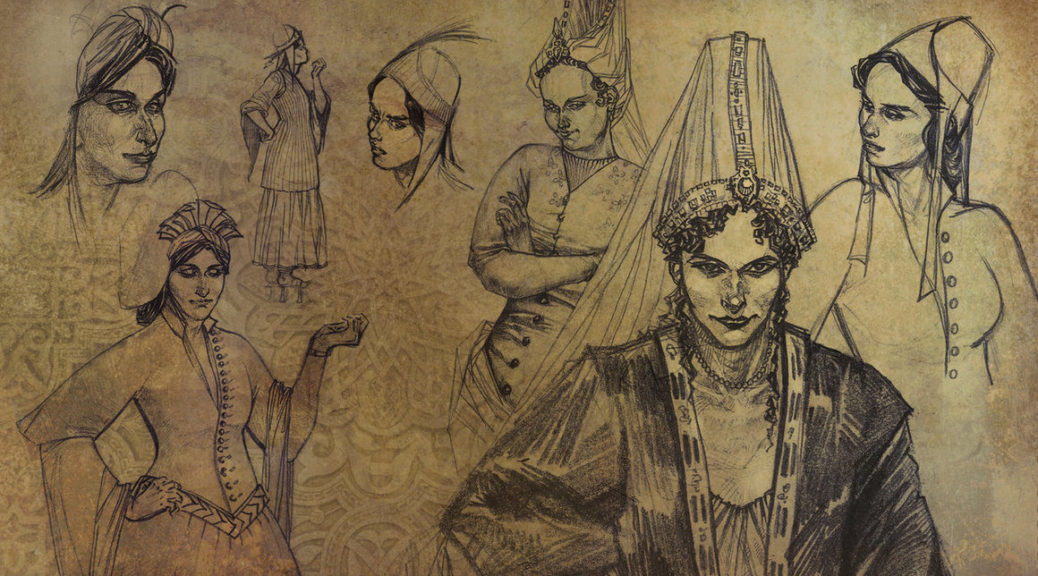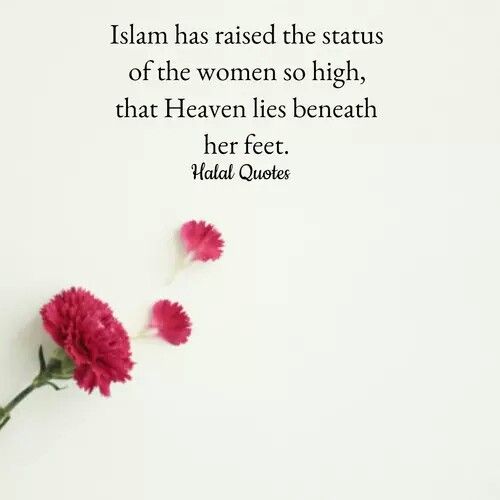As we continue the discussion regarding women and Islam, it would be wise to look at Muslim women in time periods beyond that of the life of the Prophet. Throughout history there have been several dynasties and kingdoms that have come and gone as civilizations do, but the Ottoman Empire sticks out as one of the largest and longest-lasting empires of all time. Indeed, the Ottoman Empire stretched from north-western Africa (modern day Algeria) all the way to the Red Sea, up into the Levant and Mesopotamia and to the top of the Balkan peninsula. The areas controlled by the Ottoman Sultans would eventually come to shape the layout of the modern Middle East as we know it today following the end of World War I. Within this large swath of land, the Ottomans ruled over various types of religious believers and ethnicities. The rules that governed the interactions among and between individuals were dictated by their religious communities and respected by the Ottoman’s laws (which were most informed by Islamic law). When we take a closer look at women living under Ottoman law at this time, what we see is a very different picture than that of women in other parts of Europe.
As with all societies, the role of men and women are constantly being negotiated and renegotiated. This was no different during Ottoman times. There is an increasing amount of research written about women in the Ottoman Empire, particularly their role in society, and how that view has been shaped primarily by Western travelers influenced by orientalism. Interestingly, however, that some Westerners have viewed women in the Ottoman times as fairly free. “This is further confirmed in the early 18th century letters of Lady Mary Wortley-Montague, in which she exclaims that nowhere else are women as free as they are in the Ottoman Empire.”
Research on Muslim women in the Ottoman Empire have revealed much. What we see are two levels of society, both defined in their own right by the power of the women in her particular sphere of influence.“Leslie Pearce argues…that women were allowed access to the public world in such instances as attending mosques for purposes of religious teachings, and that some religious leaders did approve of this type of female public appearance.” And as with most societies, Muslim women’s activities and roles varied between the upper and lower classes. For upper-class women, a sense of segregation unfortunately resulted in the Western misinterpretation of the term “harem,” which comes from the Arabic world “haram,” or forbidden. While the stereotype sees these women as powerless sexual objects, in reality, they held much influence over the wealthier men, such as the Sultan and his associates. Research even suggests that these women were the driving forces behind the development of charitable organizations and political decisions. This influence was enshrined in the position of the valide sultan (the “mother of the sultan”). Probably one of the most famous of the valide sultans was Hafsa Sultan, the mother of Suleiman the Magnificent. There are reports as well that lower-class women also developed their own charitable organizations (or, “awqaf” in Arabic). These women were able to use their personal influence via ties to wealthier subjects in society (read: men) to make their personal initiatives come to life. For lower-class women in Ottoman society, there was a sense of mobility and autonomy in public that was very different than that of more wealthy women. Many women were landholders, tax farmers, and other professions. Depending on the location that they lived within the empire, they may have been craftswomen or involved in textiles as well.
As mentioned above, Ottoman law takes into account Islamic law. In the case of inheritance, women were able to inherit land and other property. This is generally permitted in Islamic jurisprudence. In attempts to degrade the religion, critics often point to the fact that women usually only get half as much inheritance as men, but then again, there are no provisions for women to use their inheritance to support a family. Women can use it as they see fit. While arranged marriages were common practice at this time in the Ottoman Empire, women had the right to refuse a proposal. Divorce was also common and accepted and, interestingly as one scholar notes, “For non-Muslim Ottoman women whose traditions did not normally permit divorce, conversion to Islam was a common way to be liberated from an unwanted spouse.”
This last piece is very telling. How can we compare Muslim women in the Ottoman Empire to other women at this time period? In the United States up until the twentieth century, women could not easily own property unless they were unmarried. “When women married, as the vast majority did, they still had legal rights but no longer had autonomy. Instead, they found themselves in positions of almost total dependency on their husbands which the law called coverture.” This law essentially put all legal dealings for property into the hands of the man in the relationship, which was also the practice in several European countries at this time. Divorce and women working outside the home was also less common than in the Ottoman Empire at this time in Europe and the United States for reasons relating to social and religious interpretations of a woman’s place in society.
It is interesting to note the juxtaposition between Ottoman society and Western societies. While the Ottoman Empire eventually fell and gave rise to various Middle Eastern countries as we know them today, their interpretations of Islamic law varies and depends on the local context for interpretations of what it means to be a Muslim woman at that time. For Ottomans, it was women’s personal right to have access to their rightly-owned property, ability to refuse marriage if they wanted, and also to own work various crafts. This is of course different than what the more wealthy women experienced, and different still than women around the world at that time. The key is that we are able to identify examples throughout history where women were empowered due to real implementation of religious laws during the negotiations that were taking place in society at that time.
Tag Archives: ladies
Marriage, Divorce, and Women’s Rights in Islam
As we continue our discussion of women’s rights in Islam, it is important for us to pay attention to context and history in order to understand the way women’s rights were understood during the time of the Prophet. By doing this, the role of women in the religion will make more sense in modern times. Generally, this is how religious scholars and academics study religion because, while the information and practice should be applied in any time period, the context in which the different practices and principles came about developed out of a need for the community of believers at the time. If the principle is taken out of context and applied in modern times without concern for its original application, the soul and true intention is lost. Sometimes we can see this in predominantly Muslim societies of the Middle East and South Central and Eastern Asia wherein women’s rights are sometimes sidelined or the religious interpretation is out of the sync with Quranic principles. Unfortunately, this perpetuates the stereotype that women are treated as second-class citizens in Islam. In order to address this problem and create important distinctions, comparing and contrasting using the original sources such as the Quran will allow readers to understand women’s rights as they were initially intended within the religion. The best way to begin this discussion is by comparing particular topics regarding women within pre-Islamic Arabian society as well as after Islam was revealed to the Prophet. For this blog post, we will explore the topics of marriage and divorce and women’s rights and responsibilities.
Before Islam was revealed to the Prophet and his community, a women’s position in the society of the Arabian peninsula was much different. Due to the tribal basis of Arabian society at this time as well as the traditional patrilineal custom of inheritance, men’s rights and desires almost always trumped those of women. Infanticide was common for female babies and in general, women were considered a burden on the family. The pride of the family and weight of responsibility lay with the males. This led to men marrying as many women as they chose, a lack of inheritance for women, and no choice for women whether or not to marry or divorce. Women’s status in pre-Islamic society is often described as harsh and lacking in very basic rights unless the woman was of high-status and from a well-respected family within the tribe. Women were usually referred to as a type of property and an item with which to use in trade and financial transactions. Indeed, a woman’s worth was seemingly not acknowledged, particularly in relation to a man’s value.
When the Quran was revealed to the Prophet and he recited the verses to his community, it became clear that Islam had a particular focus on improving the status of women and that this issue was something of concern for the Prophet. “In Islamic marriage, a legal contract is the basis of the union, with the rights and duties plainly laid out and mutually agreed upon by both parties.” There are many sayings and stories about the Prophet concerning women’s rights and attitudes toward women in general. His relationship with his first wife Khadijah was seen as a model for the relationship between husbands and wives. As the Quran was revealed, several verses discussed women’s rights and their choices when it came to marriage. For example, in Surat Al-Rum 21, God makes it explicit that He created humanity as man and woman and they were intended to be together and provide tranquility and affection. In Surat Al-Nisaa 1, we find: “O mankind, fear your Lord, who created you from one soul and created from it its mate and dispersed from both of them many men and women. And fear Allah, through whom you ask one another, and the wombs. Indeed Allah is ever, over you, an Observer.” In essence, admitting that men and women were created from one was radical–especially to even compare women with men, the previously exalted figure of seventh-century society. There are other verses of the Quran reiterating this idea about the special relationship between men and women in marriage which reflects the importance of marriage in Islam. These verses and others mention how men and women should respect each other in marriage, no doubt reflecting the idea that stability in the marriage relationship leads to the foundation of strong societies.
In those instances, where marriage does not work out, women do have options. There are various verses in the Quran dealing with divorce. They deal with topics such as parting on good terms, appointing a mediator, allowing for remarriage, providing support to divorced women, and allowing for reconciliation if they change their minds on divorce after the fact. These verses explicitly lay out women’s rights and responsibilities when she requests a divorce and the assistance she receives when this procedure takes place. In pre-Islamic societies, such a notion of supporting a woman after divorce occurs was unheard of. Indeed, divorced and widowed women were unsupported and considered a societal burden. By creating a basis by which women could obtain a divorce and be supported afterwards, the society begins to institute the normalization of women requesting the same rights that men ask for and that allow women to maintain a normal role in society instead of divorce leading to her shame in society.
As discussed, the rights of women concerning marriage and divorce are fairly explicit and further guidance can be taken from the Hadith of the Prophet himself. Much of the stereotypes about women’s rights in Islam often come from news clippings and scattered media coverage of sensationalist and unfortunately occurrences happening in the Muslim world. As Frederick Matthewson Denny suggests,
“As was suggested above, the original teachings of Islam, as contained in the Quranic revelation, may be seen to be quite liberating to women, whereas the subsequent history of the Umma saw the triumph of absolute male domination, not only of the institutions of Islamic civilization but also of the sources principles, and procedures of its discourse.”
The institutions and practice of the religion that has developed in Muslim-majority countries and societies may not reflect the aforementioned understanding of marriage and divorce when it comes to men and women, but this debate and discussion must be had by Muslims themselves since.
How to Find Out Your Color Season! – Infographic
We’ve all experienced it. You put on a beautiful new dress, with the perfect accessories, new hair style and your makeup is flawless. But something just isn’t right after taking that last look in your full length mirror before stepping out the door. You can’t put your finger on it because you know how gorgeous you should look right now. Well, chances are you’re wearing a color that clashes with your features and complexion. That’s right, the color scheme you’ve chosen for your garments could be the culprit.
Every woman (and man) has a color tone (warm/cool) that falls into four seasons (winter, spring, summer, and fall). Choosing the right colors for your clothing could result in a healthy glow, highlighting your facial features for the better. On the other hand, wearing the wrong colors could dull your face making blemishes and other imperfections stand out.
I know, you’re wondering “What is a color season?” and “How do I know my color tone?”. The first step is to figure out if you have a warm (spring and fall) or cool (summer and winter) color tone. What color is your hair? What color are your eyes? Once you have those answers, see the infographic below:

So are you a…
- Summer
- Winter
- Spring
- Fall
Let me know in the comments below and stay tuned for the next part where I tell you which colors work best for your season!


